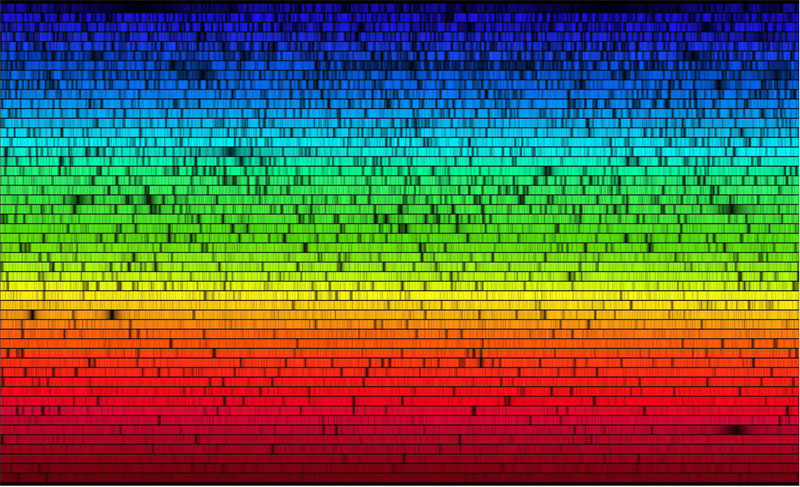Cecilia Payne deserves to be far more famous than she is. She discovered what the stars are made of.

Cecilia was born in Wendover on May 10, 1900, so she’d be 116 today. Her father died when she was just 4 years old. She won a scholarship to Cambridge university to study botany. She switched to astronomy after a year after attending a lecture by Arthur Eddington and passed her exams, but she never got a degree because Cambridge didn’t give degrees to women until 1948. Oh, and this is without any physics at high school (because the girls’ school didn’t teach it) and without a tutor because there were no tutors for women.
The only career path available to her in the UK was to be a teacher, so she looked elsewhere and found a grant to work at Harvard College Observatory. In 1925 she wrote her PhD thesis: “Stellar Atmospheres, A Contribution to the Observational Study of High Temperature in the Reversing Layers of Stars”.

If you split sunlight into a rainbow using a spectrograph, ll you’ll see about 500 thin black lines scattered across the rainbow like a fine bar code. These thin slices of missing rainbow are called absorption lines. The position depends on the chemical elements inside the star (with an offset depending on how fast the star is moving towards us or away from us). Cecila Payne worked out how the relative strength of the lines depended on the star’s temperature and chemical composition. This wasn’t easy. Astronomers Otto Struve and Velta Zebergs called it “undoubtedly the most brilliant Ph.D. thesis ever written in astronomy”.
Up until then, it was pretty much agreed that the stars had the same composition as the Earth. And there was this 25 year old woman announcing that actually the sun is 74.9% hydrogen and 23.8% helium!
Henry Russell reviewed her PhD and persuaded her not to publish because she had to be wrong. Four years later he reached the same result by different means and published that. He did give Payne a brief mention in the paper, but somehow the credit for the discovery generally went to Russell even after everyone accepted that Payne had got there 4 years before. Even then, she was employed as a “technical assistant” until 1938, although Harvard did finally made her a professor.
Cecilia Payne went on to do plenty of other things, particularly surveying variable stars, but the composition of the stars was her really amazing achievement.
